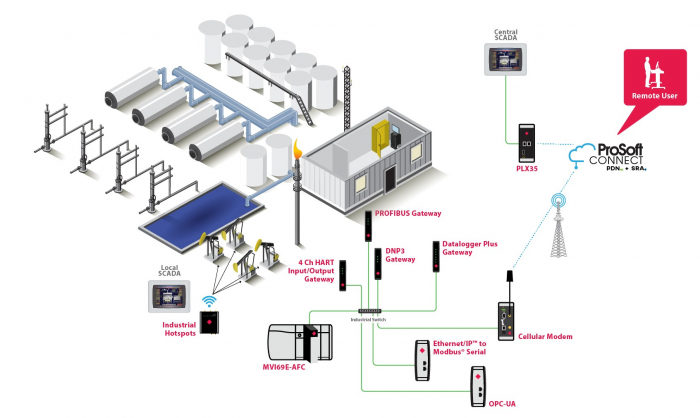Connecting Disparate Systems in Oil and Gas Applications

Connecting Disparate Systems in Oil and Gas Applications
Oil and Gas (O&G) is generally considered to be the largest sector in terms of dollar value – until recently, O&G companies were the most-valued businesses in the world. Similarly, automation in O&G is varied, complex, and large. They also have to deal with remote and, in many cases, inhospitable conditions. The size and complexity of these systems - whether saltwater disposal, LACT skids, collection, drilling, refining, or transportation – make it impossible for users to use one technology or platform. Many solutions are custom-built and tend to focus on solving a specific problem.
At the same time, the O&G industry is a leader in the use of data analytics to increase efficiency and productivity while decreasing production costs. Fundamental for data analytics are two things – reliable data and connectivity. And in O&G this is a challenge because assets are geographically dispersed. This is where ProSoft comes into the picture. For over three decades, ProSoft Technology has been the leader to connect dissimilar equipment and transport the data, securely, to where it needs to go – another automation controller, Supervisory Control and Data Acquisition (SCADA) systems, or a business enterprise system.
There is a library of protocol connectivity in-chassis modules and gateways to connect dissimilar and disparate equipment. These include data acquisition protocols like Modbus®, EtherNet/IP™, DNP3, ASCII, DH485, DF1, Siemens® Industrial Ethernet, IEC 61850, and IEC 60870. This allows users to connect and share information between controllers from different automation vendors, allowing the facilities to run efficiently. Other solutions support fieldbus connectivity via HART, PROFIBUS, CANOpen, DeviceNet, and ControlNet. Publishing protocols like ThingWorx, OPC UA, and MQTT are also available, allowing direct connectivity to business enterprise systems.
But how do we get the data from the controllers to a local SCADA system? Most SCADA systems support a common data acquisition protocol like Modbus or EtherNet/IP, so this is relatively simple.
Connecting to remote assets
The next challenge is getting the data to a centralized location for analysis.
Since O&G assets are geographically dispersed, reliable connection to the remote assets is paramount. An always-on remote communication service is the simplest and most secure way to connect remote assets. Ideally, you’ll opt for an always-on, managed network – this allows O&G companies to focus on their core activities. The Persistent Data Network is ultra-secure – it uses defense-in-depth, or a multi-layered approach to security. Some of the security measures we’ve incorporated and recommend for O&G applications include the use of dedicated control and data planes, one-time-use tunnel credential, and AES 256-bit and SHA encryption. Other top-notch security features to look for in a remote access solution include token-based two-factor authentication and single sign-on support.
Two major benefits of PDN to connect remote sites is that it is carrier-agnostic and supports peer-to-peer connectivity out of the box. Since O&G assets are remote, connectivity back to the central location will most likely be cellular wireless. However, not all areas will be covered by the same carrier. Choosing a solution that’s carrier-agnostic is ideal because it allows the users to use the most reliable carrier available in the region and still have a single network connecting all remote sites. Peer-to-peer connectivity allows information-sharing between assets without having to go through the central location all the time – very useful in pipeline monitoring systems.
Contact us to learn more about connectivity in Oil and Gas applications.

